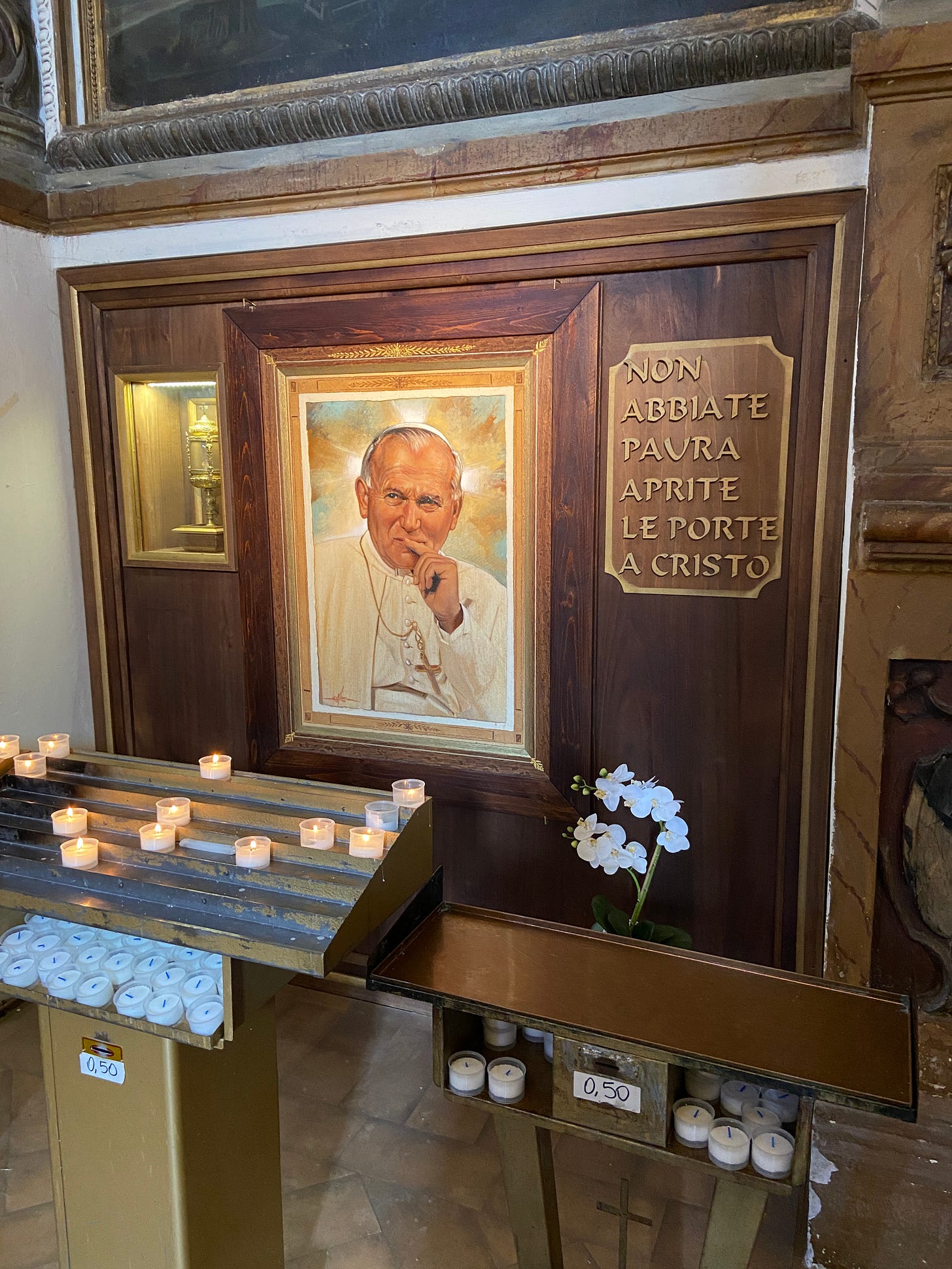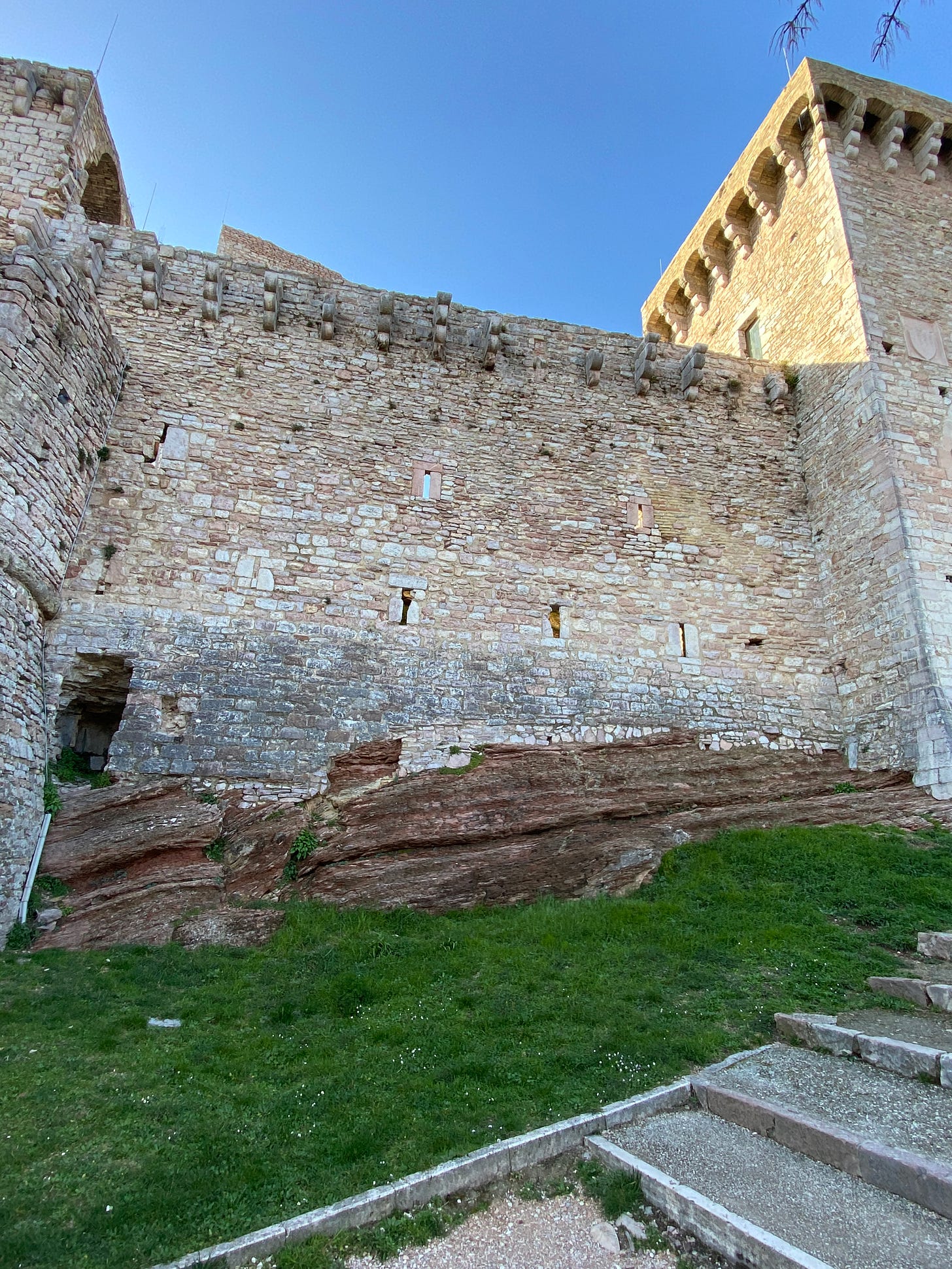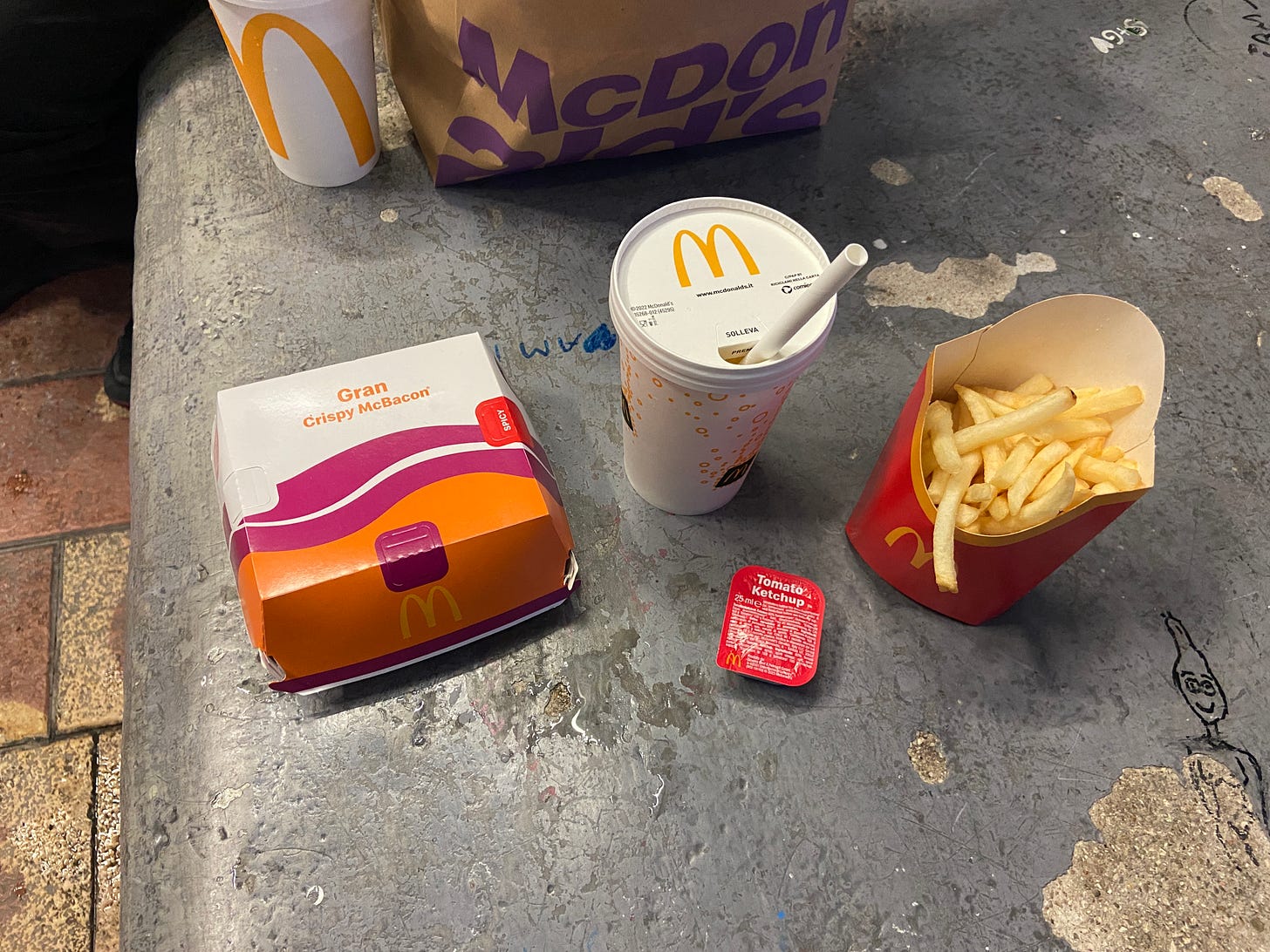Francis, Clare, Carlo, and Castles in Assisi: Day 3 from Rome
Today in Papal History will be writing from Rome through the end of this week
A train ride to Assisi started Day 3 in the Eternal City – a 2-hour jaunt north and into the heart of the Umbrian Valley, where for centuries its fertile land was a source of power struggles among rival peoples and kings.
The reason for our day trip was to see the home of the great St. Francis and St. Clare of Assisi, but the first thing I noticed was its stunning natural beauty and how peaceful it felt wandering around the medieval portion of the town, up the hill from the valley floor.
We made our way to the Basilica of San Francesco, the original home of the Franciscans and the place in which St. Francis himself is buried, along with many of his earliest confreres.
This part of Assisi has an incredible amount of papal history attached to it. The original portion of the Basilica – known as the lower Basilica now – had its foundation stone laid in 1228 by Pope Gregory IX, one day after he canonized St. Francis of Assisi, who had died the prior year.
What’s perhaps most remarkable is that the church was finished in a mere two years, after which Francis’ remains were solemnly processed to the new burial place. The upper church was begun 9 years later, in 1239, and finished in almost a decade and a half, at which point Pope Innocent IV consecrated both of them in 1253.
60 years after the Franciscans begun construction on their mother church, Pope Nicholas IV, formerly the Minister-General of the Franciscans, officially declared it to be a Papal Church, and nearly five centuries later Pope Benedict XIV would designate it as a Patriarchal Basilica and Papal Chapel, as noted by a plaque bearing an inscription and his likeness still recessed into a wall near the entrance.

Countless other Bishops of Rome have surely visited this pilgrimage site down through the centuries, but around the corner and down the hill a bit exist three modern reliefs showing three recent trips by Pope Benedict XVI (2007 & 2011) and Pope Francis (2013), respectively.

We also spent time at the Basilica of St. Clare of Assisi, an early companion of St. Francis and foundress of the first female Franciscan Order, venerating her relics and spending time at the exhibit of paintings dedicated to Pope St. John Paul II that reside in her basilica.

After touring through the two major basilicas in town, we also visited the Assisi Cathedral and the Parish of St. Mary Major, the latter of which houses the tomb of Blessed Carlo Acutis, a teenager from Assisi who died of cancer in 2005 and the first Millennial to be beatified. Unfortunately, photos weren’t allowed inside.
Our last stop was a hike to the top of the hill above town to the Rocca Maggiore (literally, “major rock”), a small medieval fortress that’s been incredibly well preserved and opened to visitors.
The castle provided easily the best view (see the top of this post) of Assisi and surrounding valley, but it may have been my favorite experience of the day for an entirely separate reason.
Being a father of sons now, I have a completely new appreciation for the instinctual love for knights and swords and battles and adventure that lies in the heart of every little boy, and I think something to that effect was reawakened in me as I walked through this place that had seen literal battles by literal knights in the pursuit of literal conquest however many times and however many centuries ago.
In the dozens of little portholes built into the stone walls, I could look out on the ground below, just imagining an archer stationed at his post (or soldiers preparing to pour boiling water and sand on the enemy, as Fr. Ned quipped several times).
In particular, the main tower had a spiral staircase that went sharply up three stories from the castle walls to the main overlook, allowing a 360-degree view of the entire surroundings – the valley floor to one side, and mountainous forest on the other.

On the way back to the train station, we made a quick walk over to the Papal Basilica of Saint Mary of the Angels in Assisi, which was built around the Portiuncula, a small Catholic chapel that was one of several little churches repaired and rebuilt by St. Francis of Assisi when he heard the Lord speak to him and say “Francis, Francis, go and repair My house which, as you can see, is falling into ruins.”


And our last stop of the day – Italian McDonald’s!
It definitely didn’t disappoint – Assisi was a great day trip all around.
Back in Rome now for the remainder of the week. See you tomorrow!








